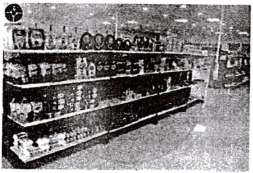Advertisements
Advertisements
प्रश्न
Match the following and select the correct option:
| Column I | Column II | ||
| (i) | Perfect competition | (A) | Differentiated Products |
| (ii) | Monopoly | (B) | Few large firms |
| (iii) | Monopolistic Competition | (C) | Single seller |
| (iv) | Oligopoly | (D) | Homogeneous products |
पर्याय
(i) C, (ii) D, (iii) A, (iv) B
(i) D, (ii) C, (iii) B, (iv) A
(i) D, (ii) C, (iii) A, (iv) B
(i) C, (ii) D, (iii) B, (iv) A
उत्तर
(i) D, (ii) C, (iii) A, (iv) B
Explanation:
| Column I | Column II | ||
| (i) | Perfect competition | (D) | Homogeneous products |
| (ii) | Monopoly | (C) | Single seller |
| (iii) | Monopolistic Competition | (A) | Differentiated Products |
| (iv) | Oligopoly | (B) | Few large firms |
APPEARS IN
संबंधित प्रश्न

The image above shows a departmental store of a market structure.
- Identify the form of market as observed from the above image.
- Discuss the features of this market form with respect to:
- Type of product
- Entry and exit of firms
- Selling cost
Mention two features of monopoly.
Producers in a monopoly are price makers. Briefly explain.
What is meant by oligopoly?
Give two characteristics of perfect competition.
Highlight the importance of selling costs in a monopolistically compatible market.
State the market form of the following commodity.
Shampoos
Give an example of price discrimination.
Discuss any four differences between monopoly and monopolistic competition.
Why an individual firm under perfect competition cannot influence the market price?
